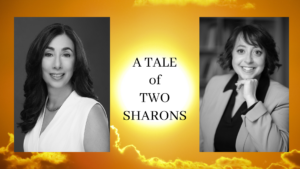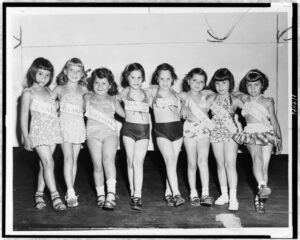Posts by Liza Nash Taylor
Sylvia Plath’s grave, photo by author
In mid-January 2023, I flew to Manchester, England on my own, then found my way to a train station, the ticket office, and the correct track. Did you know that the lock for UK traincar bathrooms is cleverly hidden and NOT ON THE DOOR? Well, after one episode, you will remember that, trust me. The train delivered me, after several delays and transfers, to West Yorkshire. I arrived in the early afternoon and, with jet lag and a cast on my wrist, rolled my carry-on along a canal, past house barges, through a winter-quiet park and into the charming village of Hebden Bridge. If you watched the British series Happy Valley, you can picture it. I had lunch and left my bag at a pub called The Shoulder of Mutton Inn, where Dachshunds in tiny tartan coats sat on barstools. I went in search of a wine shop. At about three o’clock, I took a cab from the village through the tinier, even-more-quaint village of Heptonstall. From the top of a snowy lane, the cab zigzagged down a very steep cobblestone drive where the driver made a seemingly impossible K turn and let me out. He remarked that he usually wouldn’t come down the drive in winter because of the treacherous ice.
Lumb Bank
The house, called Lumb Bank, is an 18th-century stone mill owner’s house that was once the home of the late British Poet Laureate, Ted Hughes. It overlooks bucolic pastures with grazing sheep, and is set in twenty acres of woodland. I would spend a week there with fellow writers and two instructors and the following week, I would move north to Scotland for another writing retreat with strangers. Over those weeks, I would meet and live with more than twenty writers.
Arvon is the British charity that runs Lumb Bank and a non-profit program that promotes creative writing with classes and retreats held at three country houses in England (the others are in Devon and Shropshire). The fees are affordable and they offer grants. The program I signed up for was for novel writers, and we had workshops with two British novelists and a mid-week visiting writer, who turned out to be Maddie Mortimer, wunderkind author of the fabulous Maps of Our Spectacular Bodies.
At Lumb Bank, our rooms were small and simple, bathrooms were shared, and we had to bring in firewood and coal and each had to help cook dinner for the group on one night. My room had a twin bed, a dresser, and a small desk in front of a drafty window overlooking a hillside populated with sheep. We went twenty-four hours with no heating when the boiler broke, and for one very cold night we stayed up late around the stone fireplace, drinking Scotch and reciting poetry. I don’t know any poems by heart, so instead, as the only American in the group, I read the opening paragraphs of F. Scott Fitzgerald’s This Side of Paradise.
On my cooking night, I was tasked with preparing a vegan chocolate cake, which I ruined […]
Read More
Three years ago, in mid-August, my first historical novel debuted in the summer of lockdown. The launch situation was far from ideal, and those of us who were published that summer did the best we could with bookshops closed and no in-person events. When August 2021 rolled around and my second novel was released along with the paperback version of the first, my expectations weren’t high. Another eerily quiet summer, another novel comes out into the world with a whisper.
The summers of 2020, ‘21, and ‘22 were all about book release and promotion, so there was some structure to my writing/author life. It’s late August 2023 as I write this. Things are better now for publishing authors, and though I don’t have a novel in the pipeline, through two launches I’ve developed a community of fellow writers and supportive readers. I’m celebrating friends’ book launches and live events, and sometimes speaking, mentoring, and teaching.
While my first two novels were coming out into the world, I found it tough to begin a new draft. Here, I should qualify that when my manuscript sold in a two-book deal, I had a completed draft of the second and it was a stand-alone sequel. I have real admiration for authors who crank out a book a year. While promoting a recently published book, I needed to keep that set of characters fresh in my head so I could talk about them when questions were asked (even though all authors answer the same questions multiple times). We hone our sound bites, quips, our interjections of humor, and (especially with historical fiction) we can recall historical dates and events at the drop of a hat. It’s tricky, when you’re interviewed for 45 seconds on live radio and the DJ poses questions like: So, who stars in the movie? The clock is ticking while you hem and haw, trying to remember the names of any under-thirty actors. So I was reluctant to try to bring a new set of characters to life. Plus, the pandemic sucked the creativity from my soul for a while.
For the past year, I’ve been working on a third manuscript on and off. The most recent (fifth) draft is, at present, with an editor. So there’s that waiting-to-hear-comments time, which I am now really good at enduring, as well as the sense of relief that comes with completing specific goals. The fine-tuning of this novel has been slow going, and that’s fine. There’s no deadline. I’m surprised by how nice I’ve been about it—to myself, I mean. I’ve felt fortunate that I’ve been able to move at my own pace with this project. While I work well under the pressure of a deadline, I know now that I couldn’t have written this book in one year. The story needed time to germinate and develop. I like to leave room for historical research to shape my plot, and for my characters to surprise me. Don’t get me wrong, I do still feel a strong drive to get this novel to the finish line. I’ve learned—with no deadline—what my own writing process is, and also, that I need to trust it. That’s worth something, isn’t it?
When asked to choose, I’ve considered myself a hybrid Plotter/Pantser. […]
Read MoreFrom the Flickr of briantvogt, INFphoto.com.Ref: infusmi-20/21|sp
My last article, in March, addressed the process of finding and hiring a professional editor for a novel manuscript, comparing the insecurity this sparked as akin to entering one’s dolled-up toddler in a baby beauty contest. There might be harsh criticism and unflattering light. My metaphor was similar to one I’ve used to describe the sensation of having a novel launch into the world: It’s like pushing one’s naked toddler out into traffic to cross a busy intersection alone, while one can only watch what happens from the curb (and one is also naked). So, yeah. Anxiety is involved.
I promised an update in this installation, and I know that millions of you have been on the edge of your seats waiting to hear how it’s going.
It’s going well. Thanks for asking.
As I mentioned last time, there are many ways to find a professional editor. I’ve heard recommendations from writing bloggers, and there are many options available through reputable sources, such as Poets & Writers magazine and The Author’s Guild (if you’re a member). HERE are some great articles and advice from the WU archives.
I asked some fellow historical novelists about their experiences with editors-for-hire. Denny S. Bryce’s next novel, THE OTHER PRINCESS: A NOVEL OF QUEEN VICTORIA’S GODDAUGHTER, comes out in October from Harper Collins. Denny had this to say: “For my first novel, I hired a developmental editor. I wanted to work with someone who had been an editor at a traditional house and could help me with character arcs, turning points, and conflict. I considered the decision an investment in my writing career, and working with her one-on-one definitely contributed to my growth as a writer and the success of my first novel: WILD WOMEN AND THE BLUES.” (Kensington, 2021).
For me, a conversation with a fellow historical novelist led me to an introduction. Have you ever “met” a fellow writer on social media, and instantly liked their vibe, and then loved their book, and struck up some sort of friendship? That happened with me and Tori Whitaker, author of MILLICENT GLENN’S LAST WISH (Lake Union, 2020) and A MATTER OF HAPPINESS (Lake Union, 2022) when we bonded over launching books during a pandemic. Tori is a bourbon aficionado and perhaps something of an expert on the subject. I asked her to contribute a cocktail recipe to my annual series of December Instagram posts called “The Twelve Cocktails of Christmas”. (Tori’s Holiday Old Fashioned recipe was excellent, BTW).
Tori had this to say about her choice to hire an editor: “I retained a trusted developmental editor whose work I admired and who brought 20+ years’ experience teaching writing. That decision was indispensable in finally landing a deal for my debut novel—rather than having another book stuck in a drawer.”
Since Tori writes historical novels, I trusted her personal recommendation and contacted her editor, Jenna Blum. Jenna requested five pages of my manuscript and […]
Read MorePlayground World Beauty pageant, photo from Picryl, Creative Commons.
As I write this, a sneaky plan is afoot. Today, while my injured, crated, Elizabethan-collared dog is nice and sleepy from his morning dose of Gabapentin, I will tiptoe out of the house without waking him, get in my car, drive to town, and meet my contact, Beth. At Sir Speedy Printers I will pay Beth money and she will hand over the spiral-bound 375-page draft of my third novel. Back in the privacy of my car, I will stroke its flimsy black plastic cover, imbuing it with good vibes, and perhaps enjoy a fleeting feeling of accomplishment before I drive it to FedEx (sorry, USPS, I’ve lost faith). From there, my precious baby draft will take wing and fly to Florida, where, for three weeks or so, it will be in the hands of an editor while I await a verdict. I equate this with having one’s trusting, innocent toddler dolled up with false eyelashes, hairpiece, and spray tan to be paraded in a frilly spangled fuchsia dress before harsh judges, like a paper Honey Boo-Boo in a reality-TV pageant.
For the first time, I’ve hired a professional editor. Can you tell I’m a little nervous about it? Allowing–heck–paying someone to read our work critically can produce anxiety. My personal impostor-syndrome demon (who goes by the moniker of Dobby), is having a field day here.
So, Liza, you might ask, how did you choose a professional editor? And this brings us to the point of this article.
I started looking for a paid editor a few months ago and realized that there are a lot of people offering editing and book coaching services these days. The pricing structures vary, with some charging by the page, the word, or the hour. I decided I wanted an editor with a track record as a successful author, plus editorial experience. I asked another historical novelist pal if she had any leads and she highly recommended the woman I am now working with. In our communication thus far, she seems genuinely nice. She hikes. I like the looks of her dog on Instagram. She is a New York Times bestselling historical novelist, and luckily for me, she had an opening for a new client. After she read my first five pages, she agreed to take me on. She quoted me an estimate for her services. We discussed timing, deadlines, and that she worked from a paper copy. Our communication has been smooth; she is professional and seems really on the ball.
And so, I’m entrusting her to tell me everything that’s wrong with my new book and how to fix it.
This is a new process for me. My first novel had a lot of good eyes on it before publication. It was conceived eight years ago in a college English class, which was my first writing class, at age 53. Then I took a semester-long course where I worked with a harshly critical Big Book Editor from New York, who humiliated me and then taught me a hell of a lot about writing novels. After that, I worked on it in […]
Read MoreWith permission from Alan Levine, pxhere.com
Recently, I allowed myself to type those two precious words:
THE END
I’d completed my first rough draft of my historical novel-in-progress. Of course, finishing a draft is not THE END at all.
Those two magical words are the call to arms, the rallying cry to get one’s butt back into one’s damned chair, to double down, dig deep, grovel, beg, and maybe ugly cry.
It’s time to revise.
Hopefully, one is armed with tissues as well as a stash of tried-and-true methods for honing, pruning, enriching and revealing; plus the fresh input of trusted beta readers, freelance editors, a publishing editor, and/or literary agent (if one’s agent is the editorial sort).
I asked four generous and highly esteemed fellow authors whose names begin with “J” about their tips-n-tricks for revision so that I can, selfishly, mine their ideas for my own use. And yes, I am sharing the 411 here with you.
Janet Fitch- author of the Oprah’s Book Club selection and feature film, WHITE OLEANDER; and most recently, CHIMES OF A LOST CATHEDRAL. Her Janet Fitch’s Writing Wednesday YouTube series is a gem.
“I think in terms of revision “layers”. First layer, the scenes—making sure each scene has a change, that something has good and truly happened, and the POV character can’t go back to the way it was before. Second layer, I check the senses—am I embodying the story, using all the senses, every page? I make sure the WHERE is firmly established and continues to be refreshed. Third layer, the polishing. I make sure every sentence sings—checking the verbs for specificity and flavor, that the language has texture or ‘crunch,’ and that there’s variety in sentence length and structure. I will read this draft aloud, listening for the music I’m making.”
Jane Healey- bestselling historical novelist and host of the fab webinar series H3- Historical Happy Hour. Her most recent book, THE SECRET STEALERS is out from Lake Union Publishing.
“When I’m revising I always remind myself that readers are very smart, so in the first round of revisions, I do what I think of as a “macro” review and question every chapter, every scene and every event and ask myself, does this chapter/scene/event matter enough to remain in the story? Does it advance the narrative or shed light on character enough that it deserves to stay in the novel? And if it doesn’t, I take it out (always saving it somewhere else just in case). And then the next round is the micro review – more of a line by line review of exposition, dialogue etc. to make sure that I’m not talking down to readers in any way – I’m not repeating things they already know, or annoying them with details they don’t need to know. I find reading out loud helps at this stage, it’s much easier to spot clunky dialogue or unnecessary description when I read out loud.”
Jacquelyn Mitchard- #1 New York Times Bestselling novelist (and a former MFA advisor of mine), whose latest, Read More






















